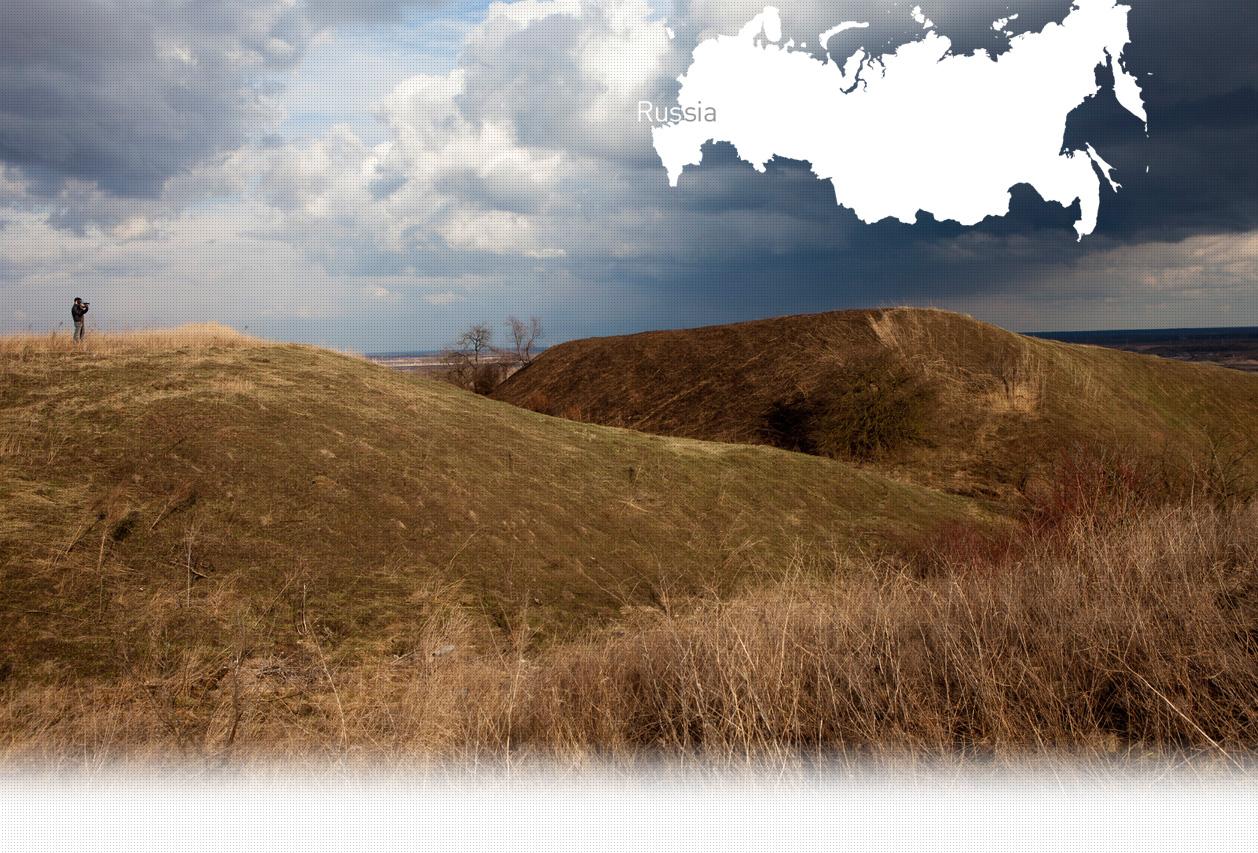

2 Killing site(s)
Piotr G., born in 1932: “I saw the shooting. The Jews were brought to the site where planes were hidden. I was taking the cows out to graze that day. I wanted to see what was happening and that’s how I witnessed the shooting. The victims were brought to the site in trucks, maybe two or three of them. The Germans made them climb down off the trucks and stand on the edge of the trench that used to be used to hide the planes, where they were then shot. There were children, men and women. There were three shooters or so each time, and I think they were policemen, not Germans. The policemen were also the ones throwing the bodies into the pit, the Germans didn’t do that kind of dirty work.” (Witness YIU/303R, interviewed in Labinsk, on April 13, 2012)
“It was determined that during the rule of German-fascist officers, the district’s Kommandant K., Ortkommandant T., his deputy Hauptmann S., SS leader H., front leader M., Labinskaya’s Burgomeister A., the chief of police P., his deputy B., led mass shootings, tortured and abused 1,315 innocent Soviet citizens (793 women, 294 children from 0 to 16 years old, 229 men).
[…] Around 600 people who were shot could not be identified due to traces of mistreatment: punctured eyes, ears and nose cut off, mutilated faces, unrecognizable bodies. Cases of children in their mother’s arms with no bullet wounds were noted. It was concluded that these children had been buried alive. All these Soviet citizens were exhumed from trenches, shelters and pits to be reburied in a mass grave near the Voroshilov railway station in the village of Labinskaya.” [Act drawn up on March 18, 1943 by Soviet State Extraordinary Commission (ChGK); GARF 7021-16-8, pp. 4-7]
Labinsk is a town in the Krasnodar region, southwest Russia, located about 145 km (90mi) southeast of the city of Krasnodar. Formerly called Labinskaya, the stanitsa was founded in 1841 as part of the line of fortifications along the Bolshaya Laba river during the Caucasian war. Because it was outside the Pale of Settlement at the time of the Russian Empire, no Jewish community ever really established itself in Labinsk, even after the Bolshevik revolution. There were 27 Jews living in the village in 1939. As the war started between Nazi Germany and the Soviet Union in 1941 however, many Jews fled eastwards and sought refuge in Krasnodar region and in Labinsk.
The Germans took over Labinsk on August 7, 1942. The Germans settled in the best buildings in town and turned the kolkhoz’s office into their general staff building. They set up a local police force, which answered directly to them. A witness interviewed by Yahad - In Unum also recalls how the Germans set up a brothel in town and invited women to go to ‘work’ there. Two days after they arrived, they also made it mandatory for Jews to wear a Star of David and announced that all the inhabitants were to perform forced labour. During the occupation, the Germans carried out several executions of Jews and anyone deemed a ‘partisan’. The first one took place a few days after the beginning of the occupation. They gathered all the Jews they could find in the school building before transporting them in several trucks to the execution site: a field where pits had already been dug by some of the town’s inhabitants, who had been requisitioned by the Germans. There, hundreds of ‘partisans’ and Jews, men, women, and children, were forced to undress, stand in front of the pit, and shot with machine guns. Children were not shot but poisoned. A German put a product under their nose which killed them. The next day, people who came by the execution site could still hear cries and moans coming from the mass grave. Another similar shooting of Jews and partisans took place in September or November 1942. The victims were taken by truck to an airfield where trenches had previously been dug for hiding aircraft. They were shot and buried into these pre-existing trenches. A witness interviewed by Yahad - In Unum also described another mass murder of Jews not mentioned in the archives. Armed Germans gathered a large group of young Jews and locked them inside a large barn on the kolkhoz. They closed the windows, locked the barn and poured gasoline on it before setting it on fire with all the Jews still inside. They surrounded the building and waited for the building to be completely burnt down and all the people dead. On January 22, 1943, the Red Army liberated Labinsk. In total, between 1,300 and 1,500 people, Jews and partisans, were killed in Labinsk by the Germans and their auxiliary police.
Do you have additional information regarding a village that you would like to share with Yahad ?
Please contact us at contact@yahadinunum.org
or by calling Yahad – In Unum at +33 (0) 1 53 20 13 17